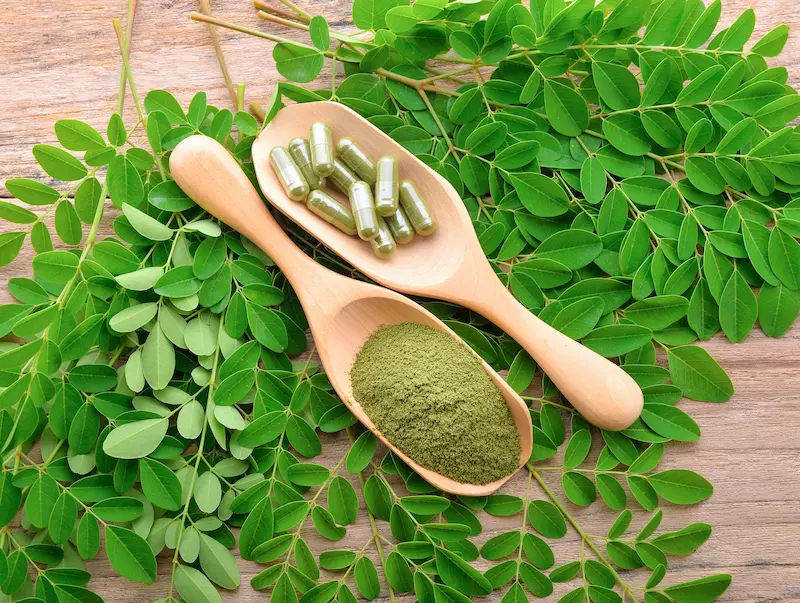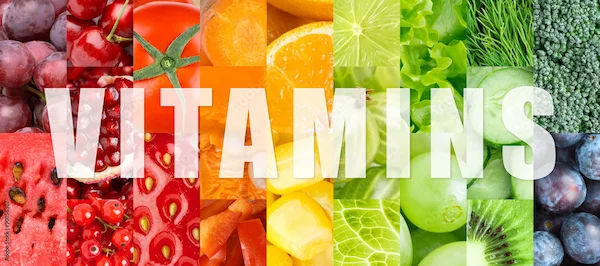8 Best Dry Fruits That Help You Lose Weight Fast
Discover the 8 best dry fruits for weight loss. Learn portions, tips, and healthy snack ideas backed by science to curb cravings and support results.

.webp?tr=q-80,f-webp,w-350,dpr-2,c-at_max 700w)
Introduction: Why Dry Fruits Can Be Smart for Weight Loss
If you are trying to manage your weight and want convenient, nutritious snacks, dry fruits can be an excellent addition to your daily routine. Many people searching for “dry fruits weight loss” hope for quick fixes, but no single food causes rapid fat loss. Instead, the real benefit of dry fruits—especially nuts and certain unsweetened dried fruits—is that they help you feel fuller for longer, reduce reliance on ultra-processed snacks, and support a sustainable way of eating. Since health organisations like the CDC emphasise gradual, steady weight loss of about 1–2 pounds a week, choosing snacks that keep you satisfied and energised matters enormously.
Below, you will find the 8 best dry fruits for weight loss, why they help, recommended portions, and simple ways to include them in your meals and snacks.
Consult a Top Nutritionist for Personalised Advice
Dry Fruits and Weight Loss: How They Actually Help
Here’s why dry fruits, when used intentionally, can support a weight-loss-friendly eating pattern:
- Fibre for fullness: Fibre slows digestion, supports steady energy, and helps you feel satisfied. Diets higher in fibre are consistently associated with better weight control.
- Protein and healthy fats: Nuts provide plant-based protein and unsaturated fats, both of which support satiety and may reduce overeating later in the day.
- Nutrient density: Dry fruits contain vitamins, minerals, and antioxidants in small volumes—important when you are aiming to reduce calories without sacrificing nutrition.
- Replacing ultra-processed snacks: Swapping crisps, biscuits, or sweets for nuts or unsweetened dried fruits can reduce added sugars, sodium, and refined starches.
- Mindful portions: Dry fruits are naturally calorie-dense, meaning modest, measured amounts can provide satisfaction without derailing your calorie budget.
Important Note
Total calorie intake still matters for weight loss. Dry fruits work best as part of a balanced diet paired with regular physical activity.
The 8 Best Dry Fruits for Weight Loss
Use the following dry fruits as snacks or mix them into meals. For best results, choose plain, unsalted, and unsweetened versions, and stick to appropriate portion sizes.
1) Almonds
Why They Help
- Rich in fibre, protein, and heart-healthy fats that promote lasting fullness.
- Studies suggest that regular nut consumption, including almonds, supports weight control when nuts replace less nutritious snacks.
Smart Portion
- 1 small handful (around 28 g or 1 oz).
Easy Ways to Eat
- Add to plain Greek yoghurt or pair with a piece of fresh fruit.
- Sprinkle over porridge or salads for added crunch.
Tip
- Choose unsalted almonds to minimise sodium intake.
2) Walnuts
Why They Help
- Provide plant-based omega-3 (ALA) fats and satisfying texture.
- Fit well into calorie-conscious plans when eaten in controlled portions.
Smart Portion
- 1 small handful (28 g).
Easy Ways to Eat
- Combine with berries and Greek yoghurt.
- Add chopped walnuts to roasted vegetable bowls or wholegrains.
Tip
- Store walnuts in the fridge to preserve their delicate oils.
3) Pistachios
Why They Help
- Contain protein, fibre, and healthy fats that support satiety.
- In-shell pistachios promote slower, more mindful snacking.
Smart Portion
- 1 small handful (28 g); in-shell versions naturally slow intake.
Easy Ways to Eat
- Enjoy a small handful as a mid-afternoon snack.
- Add to roasted vegetables, or blend into a fresh pesto.
Tip
- Choose unsalted or lightly salted pistachios.
4) Cashews
Why They Help
- Creamy texture and healthy fats help satisfy cravings.
- Useful as a more nutritious alternative to ultra-processed snack foods.
Smart Portion
- 1 small handful (28 g).
Easy Ways to Eat
- Add chopped cashews to stir-fries.
- Blend a few into smoothies for natural creaminess.
Tip
- Look for dry-roasted, unsalted cashews to avoid added oils.
5) Hazelnuts
Why They Help
- Provide fibre, healthy fats, and micronutrients such as vitamin E.
- Support satiety between meals when used in small portions.
Smart Portion
- 1 small handful (28 g).
Easy Ways to Eat
- Mix with berries for a satisfying snack.
- Add to wholegrain cereal or yoghurt.
Tip
- Avoid chocolate-coated hazelnuts; select plain, dry-roasted varieties.
6) Prunes (Dried Plums)
Why They Help
- High in fibre and contains sorbitol, which promotes digestive regularity.
- Offer natural sweetness without added sugar, making them a helpful alternative to desserts.
Smart Portion
- 3–4 prunes (30–40 g).
Easy Ways to Eat
- Chop into porridge or plain yoghurt.
- Pair with a handful of nuts for a balanced mini-snack.
Tip
- Increase portions gradually and drink water to avoid digestive discomfort.
7) Dried Apricots (Unsweetened)
Why They Help
- Provide fibre, potassium, and natural sweetness in small portions.
- Often lower in natural sugar per piece compared with some other dried fruits.
Smart Portion
- 4–6 halves (30–40 g).
Easy Ways to Eat
- Combine with almonds for a sweet–salty snack.
- Add sliced apricots to salads in place of sweetened dried cranberries.
Tip
- Choose unsulfured apricots if you are sensitive to sulphites.
8) Dried Figs (Unsweetened)
Why They Help
- High in fibre and naturally sweet, a small serving feels indulgent.
- A great alternative to high-sugar desserts.
Smart Portion
- 1–2 small figs (around 30 g).
Easy Ways to Eat
- Stuff a fig with a walnut half for a nutritious 2-bite treat.
- Dice and add to cottage cheese or yoghurt.
Tip
- Always choose no-added-sugar dried figs.
How to Use Dry Fruits as Healthy Snacks and Still Lose Weight?
The useful tips include:
- Measure once, then eyeball: Use a small cup or container to learn what 28 g of nuts or 30–40 g of dried fruit looks like, then pre-portion snacks.
- Pair with protein or produce: Nuts with vegetables, or prunes and apricots with yoghurt or cottage cheese, enhance satiety.
- Keep them accessible but controlled: Store pre-portioned servings in small jars or bags for easy grab-and-go snacks.
- Time snacks strategically: A planned snack between meals can reduce overeating later.
- Stay hydrated: Fibre works best when paired with water or unsweetened tea.
- Choose plain varieties: Avoid honey-roasted, candied, chocolate-coated, or yoghurt-coated dry fruits.
- Create balanced mini-meals:
- Almonds + apple slices
- Pistachios + carrot sticks
- Greek yoghurt + chopped prunes
- Cottage cheese + diced apricots
- Walnuts + dried figs
Common Mistakes to Avoid
Some common mistakes to avoid include:
- Over-portioning: Nuts and dried fruits are calorie-dense; stick to recommended servings.
- “Health halo” snacks: Mixed snacks with sweets, chocolate, or added oils can undermine weight-loss goals.
- Skipping meals: Dry fruits work best as part of a structured eating pattern, not meal replacements.
- Not checking labels: Added sugars, oils, and salt can appear in flavoured varieties.
- Expecting fast results: Sustainable weight loss comes from consistent habits, not one food.
Portion Guide at a Glance
- Nuts: ~28 g (1 oz), about one small handful.
- Dried fruits: ~30–40 g, usually 2–6 pieces depending on fruit type.
Who Should Be Cautious?
It includes:
- Nut allergies: Avoid nuts and read labels carefully to prevent cross-contact.
- Diabetes or prediabetes: Stick to small portions of dried fruit and pair with protein or nuts.
- High blood pressure: Choose unsalted nuts.
- Digestive sensitivity: Increase fibre gradually and drink water.
- Kidney stone history: Some nuts are higher in oxalates; seek personalised guidance.
Putting It All Together
Successful “dry fruits weight loss” strategies rely on moderation, smart pairing, and replacing less healthy options with nutrient-dense foods. Dry fruits can help you feel fuller, manage cravings, and boost nutrition without relying on fad diets or extreme restrictions. Include them within a balanced diet of vegetables, wholegrains, lean proteins, and healthy fats. Combine this with regular physical activity, proper sleep, and effective stress management for steady, sustainable progress.
Conclusion
Dry fruits can be a simple, powerful tool in a balanced weight-loss strategy. Their fibre, healthy fats, and natural sweetness help you stay full, manage cravings, and enjoy nutrient-rich snacks without relying on processed foods. Used in small, mindful portions, nuts and dried fruits support daily energy and long-term success. Combine them with regular movement, balanced meals, and hydration for steady and sustainable progress toward your health goals.
Consult a Top Nutritionist for Personalised Advice
Consult a Top Nutritionist for Personalised Advice

Ms. Sushma Jaiswal
Dietician
42 Years • M.Sc.(Food & Nutrition)
Bengaluru
Swasthya Nutrition, Bengaluru

Neelanjana J
clinical nutrition
3 Years • Bsc., Msc. Nutrition and Dietetics.
Bengaluru
Apollo Clinic, JP nagar, Bengaluru

Ms. Soma Saha
clinical nutrition
17 Years • B.Sc. - Home Science (Food & Nutrition), M.Sc. - Home Science (Food & Nutrition)
Kolkata
Dr Utsa Basu Clinic, Kolkata
(50+ Patients)

Ms. Samapti Maity
Dietician
11 Years • Bsc (Clinical Nutrition & Dietitics), NDEP, Course in Maternal Infant Young Child Nutrition.
Kolkata
BIENETRE CLINIC, Kolkata

Dr. Ramalinga Reddy
General Physician
5 Years • MBBS MD General medicine
Bengaluru
PRESTIGE SHANTHINIKETAN - SOCIETY CLINIC, Bengaluru
Consult a Top Nutritionist for Personalised Advice

Ms. Sushma Jaiswal
Dietician
42 Years • M.Sc.(Food & Nutrition)
Bengaluru
Swasthya Nutrition, Bengaluru

Neelanjana J
clinical nutrition
3 Years • Bsc., Msc. Nutrition and Dietetics.
Bengaluru
Apollo Clinic, JP nagar, Bengaluru

Ms. Soma Saha
clinical nutrition
17 Years • B.Sc. - Home Science (Food & Nutrition), M.Sc. - Home Science (Food & Nutrition)
Kolkata
Dr Utsa Basu Clinic, Kolkata
(50+ Patients)

Ms. Samapti Maity
Dietician
11 Years • Bsc (Clinical Nutrition & Dietitics), NDEP, Course in Maternal Infant Young Child Nutrition.
Kolkata
BIENETRE CLINIC, Kolkata

Dr. Ramalinga Reddy
General Physician
5 Years • MBBS MD General medicine
Bengaluru
PRESTIGE SHANTHINIKETAN - SOCIETY CLINIC, Bengaluru
More articles from General Medical Consultation
Frequently Asked Questions
Can dry fruits help me lose weight fast?
They support weight loss by increasing fullness and replacing higher-calorie snacks, but no food alone causes rapid fat loss. Most people achieve best results with a slow, steady loss of about 1–2 pounds per week.
Which dry fruits are lowest in calories per serving?
Among nuts, pistachios and almonds tend to be lower in calories per ounce. For dried fruits, prunes, apricots, and figs work well in small portions. Portion size matters more than small calorie differences.
Are dates good for weight loss?
Dates are nutritious but calorie-dense. If you enjoy them, keep portions small (e.g., 1 date) and pair with nuts to help stabilise blood sugar. Many people find prunes, apricots, or figs easier to portion.
How many nuts can I eat per day to lose weight?
A typical guideline is about 28 g per snack, with 1–2 servings per day fitting many meal plans. Ideal amounts depend on your caloric needs and activity level.
Are nuts better than dried fruit for weight loss?
Nuts generally offer more protein and healthy fats, making them more filling. Unsweetened dried fruits provide fibre and natural sweetness. Both can fit into a weight-loss plan when used in measured amounts.


.webp)

